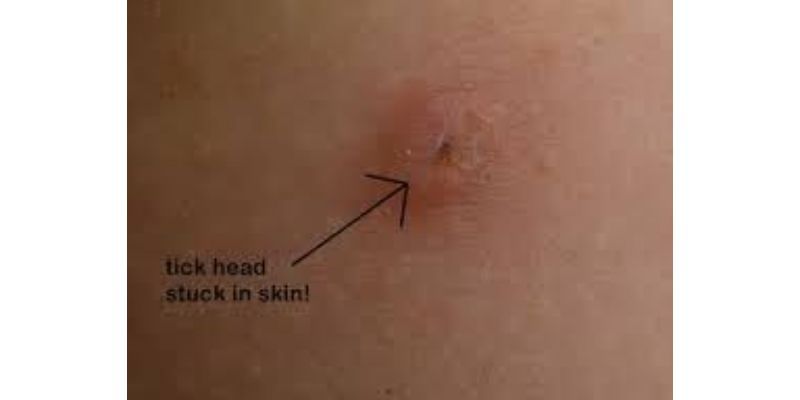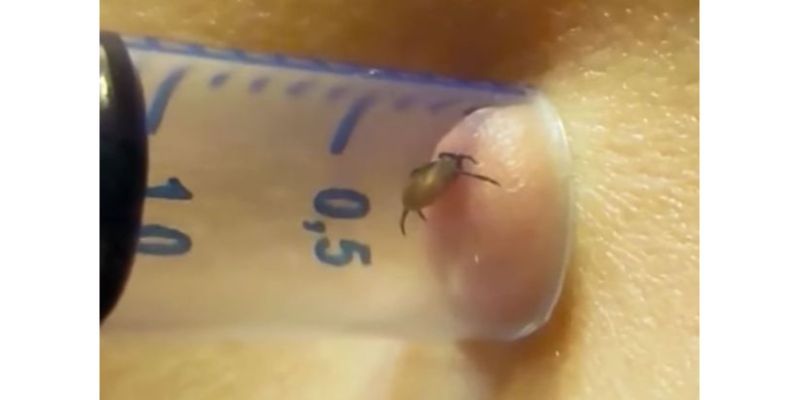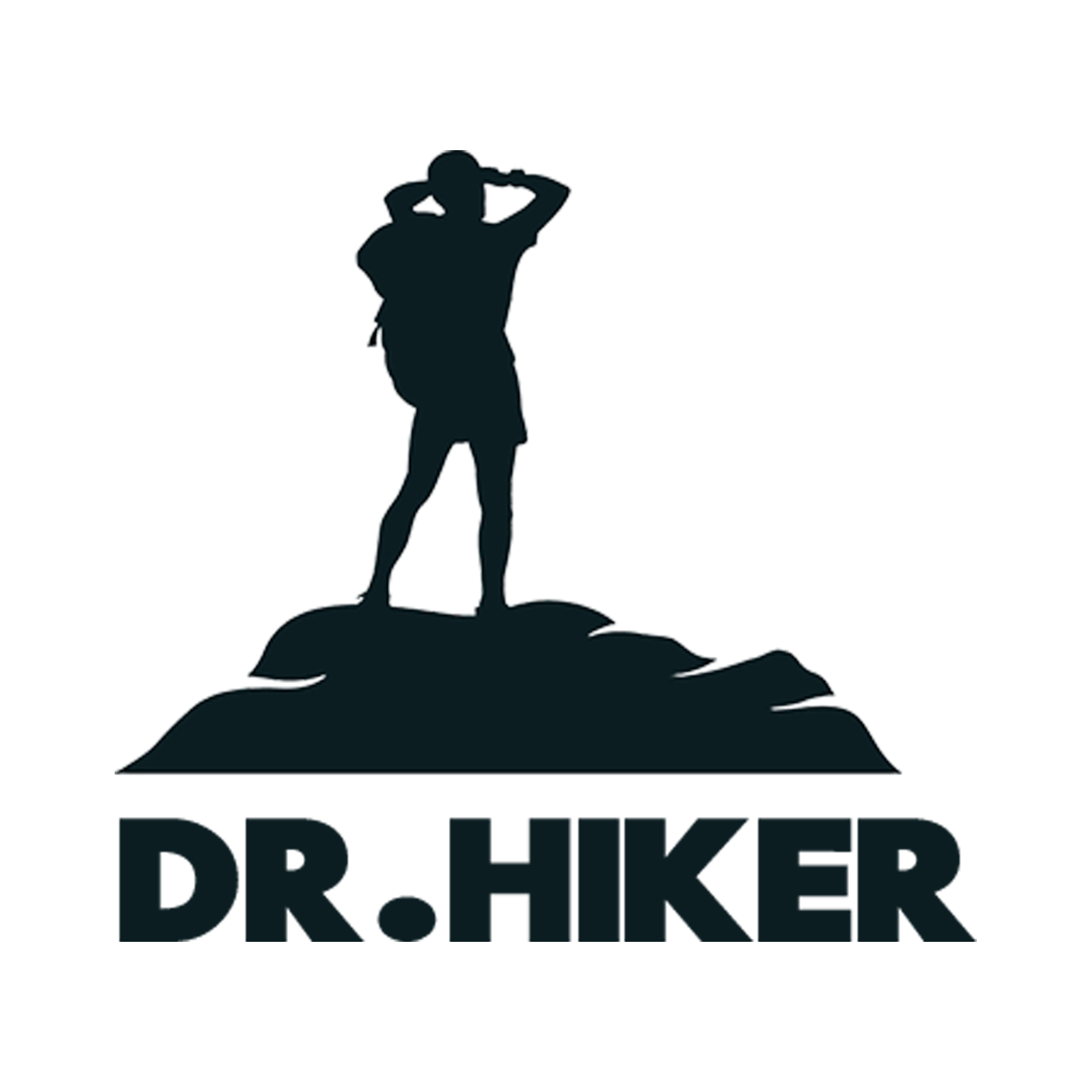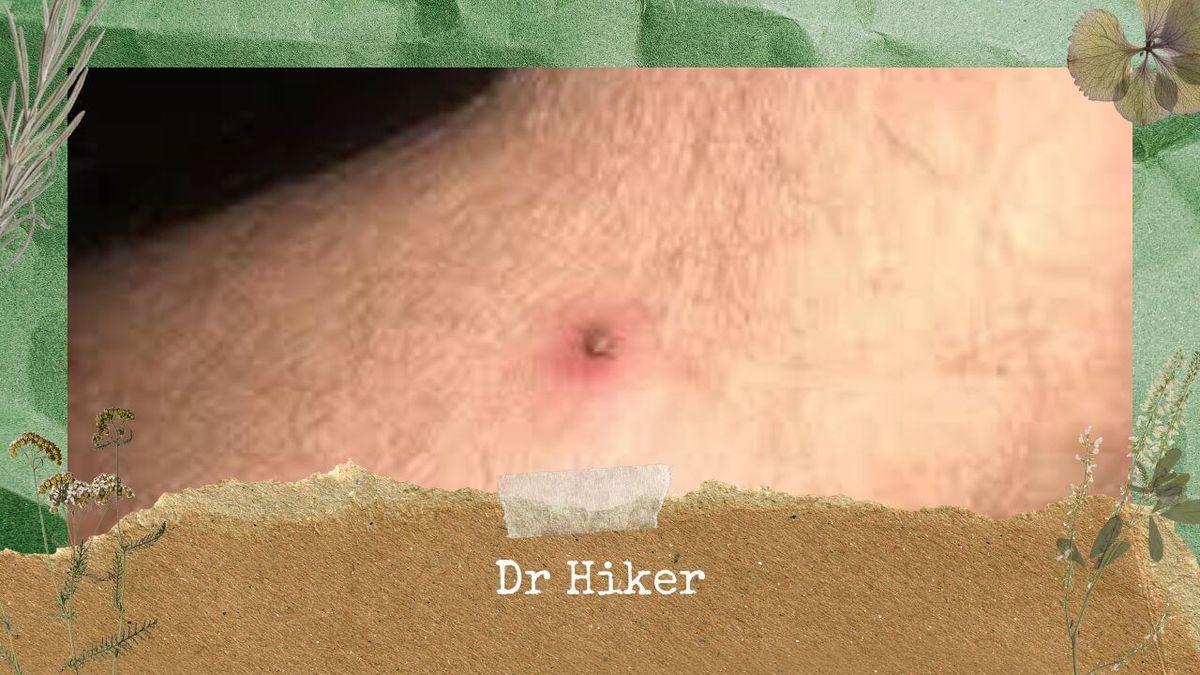Most tick bites are harmless but sometimes can lead to a serious infection like Lyme disease.
You are holding it firmly and trying to remove it with continuous motion of the hand necessary for tick removal. Otherwise, you will likely get the tick head left in your skin. Now we will discuss how anyone can tell whether the tick is still in your skin or not.
How will you tell whether the tick head is attached or not?
First, remove the tick from the skin if you have gotten its bite. For this, try to remove the tick very carefully with tweezers. If you have removed the tick from the body with moving legs, it is a full tick of all body parts. You can also notice the tick head near the tip of the tweezers.

The leftover tick head in the skin sometimes becomes more itchy and irritant. Do not try to dig the area around the head because it can cause a serious infection of some tick-borne disease.
Methods to remove the tick heads from the skin:
Before removing the tick head from the skin, it's better to clean the area by rubbing alcohol. Then use different ways to remove the tick head:
Tweezers:
- Always use fine-tipped tweezers to remove the head.
- Use the Sterile tweezers with soap and water.
- Insert the tweezers through the angled edge. And firmly grasp it.
- Try to pull it out from your skin with a continuous and firm tug.

Using extractor pump:
We use the extractor pump to remove the bee sting, snakebites, scorpions, and tick bites. It sucks the saliva too. If the tick head is left in the skin, then it can be pulled out by using an extractor pump:
- Put the suction end on the bite location.
- Pull the pump upward.

Note: You cannot use the pump to remove the tick because getting an infection is risky.
Needle or splinter:
You can also use the sterilized needle or splinter to remove the tick head:
- Make a hole to take the tick head out of the skin. Do not break the skin layer. Use the pointed end to remove the head at the specific location.
- Then you can remove the head using tweezers or a needle.

You can try the needle or splinter only one to two times to remove the tick head. But you do not need to dig the specific area several times. Leave it and try another method if it is not possible in this way. Because the tick has barbed wire jaws through which it stuck to your skin.
Cut the skin containing tick head:
It seems hard to take the tick head out of the skin using a splinter due to the barb wire teeth. So you can also use clean, pointy, and sterilized scissors to cut the area of the skin embedded with the tick head.

But I will not recommend this because it is too risky, and you are at high risk of getting an infection. The skin will become inflamed and irritant for you.
Wait to come out:
Please do not panic about the tick head on the skin because, in some cases, it is not too harmful. Sometimes it comes out of the skin as the skin grows by itself.
You can also watch in this video How to remove the tick bite:
How long will the tick head take to come out of the skin?
Skin healing is a natural phenomenon, so it takes time to recover. It can take two or more weeks, depending on your body's healing period or the bite location.
In two weeks, your body will push it outside then you can remove it by using a splinter or tweezers. For example, if the tick bite is in the armpits, it is deep and will take time to recover.
Treatment after taking the tick head out of the skin:
After the tick removal the bite location acquires a great care of it. Treat it as a wound; otherwise, a bit of negligence can deceive you from getting something dangerous enough, so:
Cleansing of bite area:
After removing the tick head or whether it is still in the skin, try to clean the area. Use alcohol, soap, and water for cleansing. You can use some ointment, antibiotic, or Bactrian to prevent it from infection.
Monitoring:
Do not be unconscious about the tick bite after the tick removal or if the tick head is still in the skin. Give proper attention to it. Observe it and contact your doctor if you have seen the following symptoms:
- Rash
- Aches
- Fatigue
- Flu or fever
- Sleep disturbance

These symptoms may appear within 24 hours of the tick bite or 30 days.
You can also watch in this video “How to treat the tick bite?” in this video:
Is it risky to have the tick head inside the skin?
Normally with time, the sin expels the bump of the tick head from the skin, but it is not safe to leave it inside the skin.

FAQ'S
Where the tick is usually found?
It is usually found in grassy and hiking areas. So always cover your body parts to protect yourself, especially soft and blood-rich areas like the neck and armpit.
What are the common symptoms of getting tick-borne disease?
The common symptoms of getting the tick-borne disease are:
- Fever
- Chills
- Body aches
- Headache
- Fatigue
- Rash
How can you prepare yourself for tick removal?
Following are the necessary material for tick removal you should keep around you:
- Fine edged tweezers
- Small container
- Rubbing alcohol
What is the warning which you should adopt while removing?
Warnings are the following:
- Do not burn with a hot object
- Do not kill the tick while attached to your skin
- Do not lubricate the tick with liquid or oil
Conclusion:
Ticks are a parasitic insect that feeds on the blood of humans and causes infection. So it is better to adopt the protective measure to keep yourself safe. If you get the tick bite, then after its removal from the skin, ensure that you have removed it completely along with the head.
If you have gotten the tick head trapped in your skin, it is better to take preventive measures to reduce the risk of infection.









